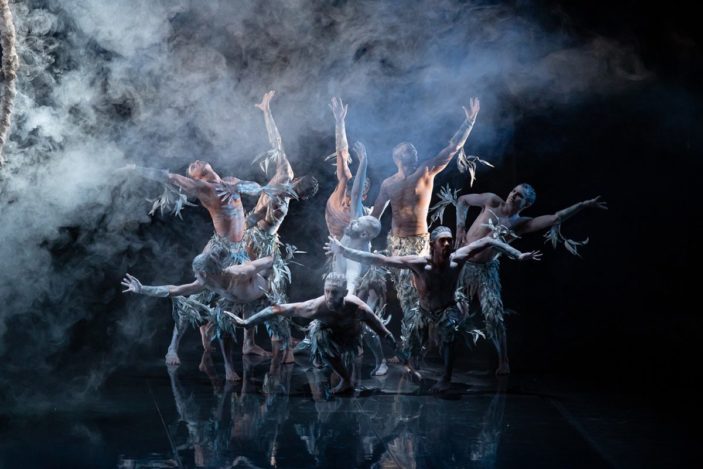
If you want an example of the transportive power of dance then you need to look no further than Firestarter: The Story of Bangarra. This documentary packs a lot into its slender 96-minute run time, by tracing the origins of this First Nations dance troupe. This film draws together many facets and stories including the overarching social and political contexts to form a visceral and transformative visual feast.
Bangarra Dance Theatre is a Sydney-based company whose beginnings are traced back to the National Aboriginal Islander Skills Development Association (NAISDA) and the Aboriginal Islander Dance Theatre. The filmmakers, Wayne Blair (The Sapphires) and Nel Minchin (Matilda & Me) take us back to the origins of the dance company.
Things began with NAISDA founder, Carole Y. Johnson and two NAISDA graduates – Rob Bryant, a Gumbaynggirr man and the South-African born, Cheryl Stone. They would develop educational programs for dance amidst the backdrop of Australia’s history. The film covers the 1967 Referendum and clips from the Bicentennial celebrations.
An integral part of the Bangarra story is the three Page brothers. This powerful trio includes artistic director Stephen Page, music director David Page and lead dancer Russell Page ‒ who was often described as the next Mikhail Baryshnikov. The film explores their childhood in Queensland with their parents and many siblings. They were encouraged to perform from an early age and the home videos are a real treat. David would appear on The Paul Hogan Show as a youngster and was the only Australian artist to be signed to the Atlantic label. This was a foreshadowing of subsequent careers in the arts.
The Page boys played key roles at Bangarra following Stephen’s appointment to artistic director in 1991. Along with his brothers, they would solidify the troupe’s importance as a cultural institution. This documentary is peppered with clips from the company’s key performances, Blak, Lore, Dark Emu and Bennelong, and it’s no exaggeration to say that these alone are worth the price of admission.
There are talking-head interviews with Sydney Festival’s Wesley Enoch and Sydney Dance Company’s Graeme Murphy, which gives context around the cultural significance of the group. Bangarra explores First Nations history in their dances, including the impact of colonisation, hope and tragedy, and the opposing forces of traditionalism versus modernism. Some of the company’s latest generation of dancers are interviewed, and it is interesting to see the evolution over the decades of Bangarra’s rich history.
While Firestarter has some joyful moments, it also has some tragic and sobering ones. In all, the film is a wonderful celebration of First Nations’ performance. It also shows how necessary it is for more First Nations artists to be given platforms to explore their heritage and history.
Firestarter is a sensitive exploration of some artistic pioneers and their significant contributions to the Australian and international cultural landscapes. An important film that expands our understanding of Australia’s fraught history and opens up the dialogue in this country, Firestarter ultimately succeeds in offering opportunities for appreciation and reconciliation.
![]()
![]()
![]()
![]()
![]()
FOUR STARS (OUT OF FIVE)
Firestarter: The Story of Bangarra is available to watch now on ABC iView.
